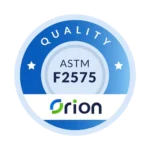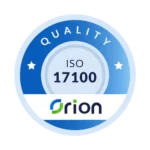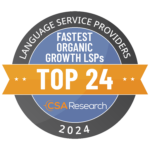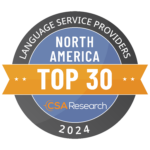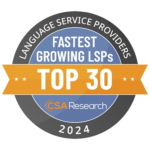Defining Your Multilingual Event Objectives for Success

Welcome to the world of multilingual events, where dreams take shape, cultures collide, and languages intertwine.
Planning such an event is like stepping onto a thrilling roller coaster ride filled with excitement, challenges, and endless possibilities. But fear not, for amidst the excitement, a compass will guide you to success: defining clear event objectives.
Imagine the stage is set, and an eager audience awaits. Your event objectives can unlock their hearts, stir their emotions, and create an unforgettable experience.
By the end of this post, you’ll possess the knowledge necessary to set distinct and attainable objectives for your multilingual event.
Are you ready to dive into the depths of event planning magic?
Let’s begin!
Related: Ensuring Exceptional Translation and Interpretation Services
The Power of Defining Event Objectives
Defining event objectives holds unparalleled importance in the dynamic world of event planning. They serve as guiding pillars, illuminating the path to success, shaping your every move, and leading you toward a truly successful event.
Just imagine: your objective is to raise awareness about a pressing issue. The accurate measure of success lies in the hands of those who gain knowledge and understanding through your event. Conversely, if your goal is to generate revenue, triumph is quantified by revenue generated.
Fact Alert: Did you know that events with well-defined objectives are 60% more likely to achieve remarkable success?
Let that sink in as we unravel the secrets of harnessing the true potential of event objectives.
Related: Cost-Effective Tips for Planning Multilingual Events
Crafting Clear Event Objectives: A Step-by-Step Guide
Step 1: Clarify Your Multilingual Event’s Purpose
Begin by identifying the core reason behind your multilingual event.
Is it about expanding into new markets, achieving international consensus, or fostering professional growth?
Understanding the purpose will lay the foundation for defining your event objectives.
Did you know that having a clear event purpose increases the chances of success by 50%?
Keep this in mind as we move forward to the next steps in creating impactful objectives for your multilingual event.
Step 2: Set SMART Goals and Key Performance Indicators (KPIs)
To ensure success, it’s crucial to establish SMART goals and KPIs for your multilingual event.
SMART goals are Specific, Measurable, Achievable, Relevant, and Time-bound, providing clarity and feasibility to your objectives.
Examples of SMART goals for a multilingual event may include:
- Boosting participant diversity by 20% compared to the previous year’s event.
- Acquiring 50 business leads from attendees within a fortnight of the event from 2 new market areas.
- Facilitating three networking sessions during the event, with a minimum of 75% attendee participation.
By incorporating SMART goals into your planning, you ensure focused objectives for your multilingual event.
Step 3: Identify Key Performance Indicators (KPIs)
KPIs are measurable data points that help track and evaluate your event’s success.
Potential KPIs for a multilingual event could include:
- The percentage of attendees from various language backgrounds.
- The rate of attendees engaging in interactive activities.
- The number of new business leads generated for each target market.
By clearly identifying KPIs, you ensure tangible outcomes for your multilingual event.
Step 4: Communicate Your Objectives and Expectations with Clarity
To ensure a cohesive event experience and accurately measure objective success, follow simple steps:
- Articulate Objectives: Clearly express your event’s objectives and expectations to your team, vendors, and attendees. Share the purpose, desired outcomes, and key milestones. Don’t forget to make the information available in their preferred language.
- Establish Clear Roles: Define the roles and responsibilities of each team member, ensuring everyone understands their tasks and how they contribute to the objectives. Who will be responsible for coordinating with the language service provider?
- Foster Open Communication: Create a channel for addressing questions, providing updates, and encouraging feedback. This transparency enhances collaboration and alignment.
By clearly communicating objectives, you empower your team, vendors, and attendees to work in sync, resulting in a cohesive event experience and measurable success.
Step 5: Engage Your Multilingual Audience
Deliver an exceptional event experience by catering to the needs of your multilingual audience.
- Offer Interpretation Services: Use professional interpreting services to reduce language barriers.
- Provide Multilingual Materials: translate event materials into multiple languages for easy access and inclusivity.
- Consider Cultural Nuances: Plan event activities that respect and accommodate diverse cultural practices.
Doing this expands your audience and elevates the overall event experience. Get ready to forge meaningful connections and leave a lasting impact.
Related: The Impact of language evolution on legal outcomes
Wrap-up
In event planning, defining clear objectives is the secret sauce that leads to remarkable success. As you wrap up your journey, remember these key takeaways:
Stay Grounded: Your event objectives serve as an unwavering compass, keeping you focused amidst the whirlwind of planning.
Embody Purpose: Identify your overarching goals, whether fostering cultural awareness or expanding into new markets, to infuse your event with purpose and meaning.
Measure Your Triumph: Setting up SMART goals and KPIs provides a clear target to work towards and allows you to evaluate your event’s success based on measurable results.
Connect with Your Audience: Catering to the needs of your multilingual attendees ensures an inclusive and engaging event experience that resonates deeply.
The stage is set, and the audience awaits; it’s time to unveil a remarkable event experience!
 Cesco Linguistic Services was founded on August 4, 2004. Our passion is to facilitate Human-to-Human understanding in meaningful and rewarding ways through the power of language. We excel at providing expert & timely customized language solutions for organizations of all sizes. The name Cesco (pronounced “Chesco”) comes from the founder’s firstborn son Francesco, whose birth coincided with the year the company was founded.
Cesco Linguistic Services was founded on August 4, 2004. Our passion is to facilitate Human-to-Human understanding in meaningful and rewarding ways through the power of language. We excel at providing expert & timely customized language solutions for organizations of all sizes. The name Cesco (pronounced “Chesco”) comes from the founder’s firstborn son Francesco, whose birth coincided with the year the company was founded.






